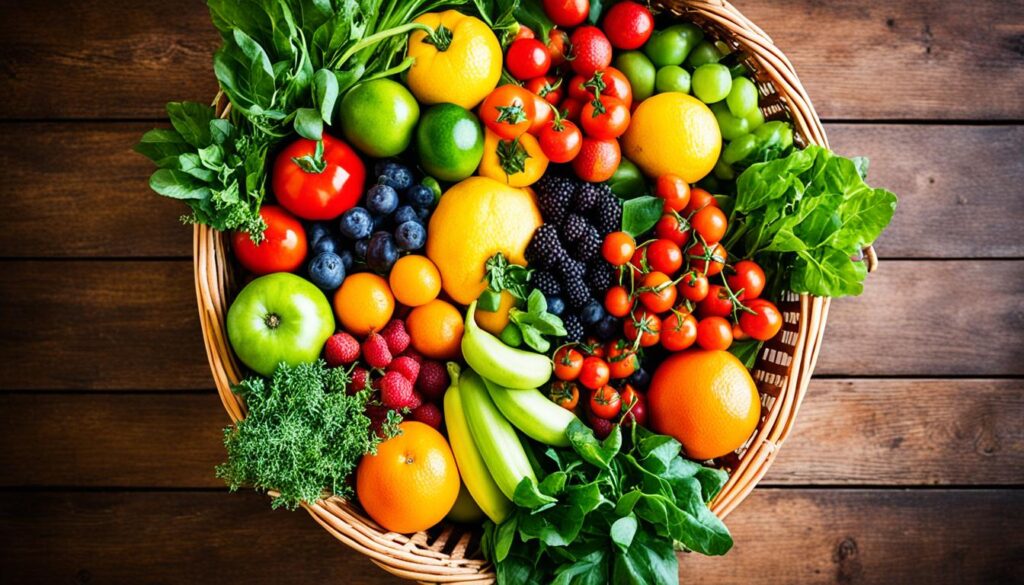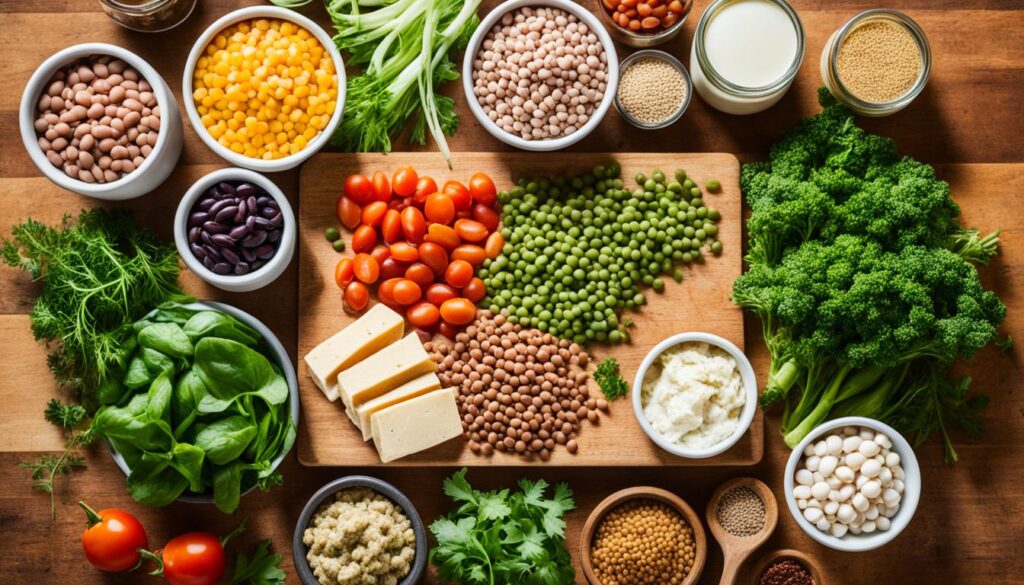Physical Address
304 North Cardinal St.
Dorchester Center, MA 02124
Physical Address
304 North Cardinal St.
Dorchester Center, MA 02124

Discover smart strategies for healthy eating on a budget. Learn cost-effective meal planning, affordable recipes, grocery shopping tips, and nutritious ingredient swaps.
Nutritious food is often pricey, making it hard to eat well on a budget. But there are lots of ways to save and still get nutritious foods. By planning ahead, sticking to your grocery list, cooking at home, and avoiding impulse purchases, you can eat well without spending a lot. Also, buying whole, unprocessed foods, looking out for sales, finding affordable protein sources, and smart produce shopping will stretch your money.
Meal planning helps you eat well without spending too much. Each week, plan your meals and check what you have in your pantry and fridge. This way, you can make a grocery list that matches your plans. It’ll stop you from buying things you don’t really need, cutting down on waste.
Choose one night each week to focus on meal planning. This simple habit is great for those starting out. It keeps you on track, saves time, and makes sure you’re eating good, cheap food all week long.
Before you shop, look through your pantry and fridge. See what you already have that can go into meals. This stops you from buying things you already possess and helps you use up what you have.
Think about your meal plan and list what you need from the store. Stick to this list when you shop. It cuts down on buying things you don’t need, saving money and avoiding unnecessary waste.
When you get to the grocery store, stay on your grocery list. This keeps you from buying things you don’t need. It also helps you choose budget-friendly shopping and whole foods. These are healthier than processed foods. Start by walking around the edges of the store. You’ll find fresh, unprocessed foods there. They’re better for you and often cheaper.
At the store, compare unit prices to get the best deal. The priciest items are usually at eye level. But, their unit prices might not be the best. Be smart, always check the unit price. This is the total price divided by the size. It shows you which item gives you the most for your money. Also, use a grocery list app. It helps you not forget what’s on your list. This keeps your budget-friendly shopping goals strong.
| Product | Brand A | Brand B | Store Brand |
|---|---|---|---|
| Canned Beans (15 oz) | $1.29 | $1.19 | $0.89 |
| Whole Wheat Bread (24 oz) | $3.99 | $3.49 | $2.79 |
| Frozen Broccoli (16 oz) | $2.49 | $2.29 | $1.99 |
Stay true to your list, focus on the outside aisles, and compare prices. These tips help you save money. They also make sure you pick the most budget-friendly and whole food choices for your family.
In today’s world where grocery prices are going up, choosing home cooking is wise. It’s good for your health and wallet. By cooking at home, you spend less than if you ate out. Dining out is usually pricier than home-cooked meals.
Cooking at home gives you control over what you eat. You can pick ingredients that are good for you and cost less. This way, you save money and eat healthier, making smart choices for the family.
Making large batches of meals ahead is a great idea. You can do this on weekends or daily. Having leftovers means you don’t have to eat out when things get busy. It saves you both money and time.

By choosing home cooking and planning with meal preparation and leftovers, you can tackle making meals that save money. Your family can get nutritious meals that are good for the budget. You won’t have to give up on quality or health.
Sticking to a budget-friendly diet means saying no to impulse purchases at the store. It’s easy to add quick, processed snacks when you’re hungry. But this can mess up your meal planning and spending goals.
Here’s a trick to avoid impulse purchases: never shop on an empty stomach. Instead, grab a healthy snack like fruit, nuts, or yogurt before you go.
This keeps you focused on your grocery list and stops you from buying things you don’t need.
Eating healthy doesn’t have to be expensive. Focus on whole, unprocessed foods. These include grains, legumes, fruits, vegetables, dairy, and meat. They are usually cheaper than processed foods. For example, choose whole grains like brown rice and oats.
Choosing generic brands can also save you money. You’ll still get nutritious meals. Plus, less processed foods often give more servings, offering more value. Frozen foods can be as healthy as fresh, and sometimes even more so, because they keep their nutrients better.
Whole grains are a better choice than processed cereals. Foods like brown rice and oats offer more nutrition. They’re packed with fiber, B vitamins, and minerals. These make for healthier and cheaper meals and snacks.
Choose generic brands when shopping. They’re usually just as good as name brands. This means you can save money and still eat well. Getting budget-friendly ingredients helps with nutritious meal planning.

Enjoying healthy food while saving money is totally doable. It involves planning ahead, shopping smart, cooking at home, and choosing whole foods. These steps not only keep you healthy but also help you spend wisely. They are perfect for anyone looking to cut costs or eat better without overpaying.
Getting the most out of your money means picking affordable recipes. Look for meals that use simple, nutritious ingredients. Always grab whole grains, lean meats, and fresh produce when they are cheaper. For a budget boost, try bean dishes. They are wallet-friendly and packed with plant-based protein and fiber.
Planning your meals saves cash. Take time each week to lay out what you will eat, check what you have, and make a list. Planning keeps you from buying on a whim. It also lets you cook big batches of food. This way, you can have tasty leftovers, saving you time and money.
If you’re careful and creative, you can eat well without spending too much. These strategies show that making good food choices doesn’t have to strain your budget. They can lead to better health and financial stability, with just a little effort.
Buying groceries on a budget is a smart game. Stock up on pantry staples when they’re on sale. Grains, beans, spices, and other items with a long shelf life work well bought in bulk. Saving money on these through grocery sales makes your budget-friendly shopping and cost-effective meal planning much easier.
Buying your favorite pantry items in bulk when they’re on sale is great. Common sale items are rice, oats, lentils, and dried herbs. Buying these in bulk can save a lot of money. But, be careful not to buy too much of things that go bad quickly. This could waste your savings.

Grabbing pantry staples at a discount helps you keep a stocked kitchen. You can then make cost-effective meals all week. This smart grocery shopping trick supports your goal of eating healthy without spending too much.
Keeping a healthy and affordable diet means looking for protein that won’t break the bank. While fresh meats and fish can be expensive, there are cheaper cuts of meat easily available. These include chuck steak, pork top sirloin steak, whole chicken, or ground options. They are perfect for a variety of meals.
With meat alternatives, you can also benefit from plant-based proteins. Think about beans, legumes, eggs, or canned fish a few times every week. These are budget-friendly and offer great nutritional value, making them a smart choice.
| Protein Source | Protein Content | Cost per Serving |
|---|---|---|
| Peanut Butter (2 tbsp) | 7g | Less than $2 |
| Eggs (1 large) | 6g | Less than 20 cents |
| Edamame (1 cup shelled) | 18g | Varies, but generally affordable |
| Canned Tuna (3 oz) | 22g | Around $1 per can |
| Plain Greek Yogurt (100g) | 9g | Approximately $3 per 16-oz tub |
| Sunflower Seeds (1 oz) | 6g | Varies, but generally affordable |
| Black Beans (1/2 cup) | 7.6g | Less than $1 per 15-oz can |
| Sardines (3.75 oz can) | 23g | Around $2 per can |
| Cottage Cheese (1 cup) | 23g | Approximately $3 per 16-oz tub |
| Whey Protein Powder (1 scoop) | 20g | Around $0.40 per serving |
By adding these affordable protein sources, your meals can be both economical and rich in nutrients.

Eating healthy don’t need to break the bank. Picking the right produce can help a lot. Go for local, in-season produce. It’s both cheaper and healthier than things shipped from far.
About 80% of people should choose in-season stuff for its affordability and flavor. Plus, buying by the bag is often more cost-effective than picking single pieces.
Got a lot of leftovers? Freezing the excess is a great way to avoid waste. Frozen fruits and vegetables keep their nutrition and are available all year at a lower cost. They’re 20% less expensive than fresh veggies, shows research.
| Produce Option | Cost Comparison | Shelf Life Comparison |
|---|---|---|
| In-Season Produce | Lower costs due to peak supply and local sourcing | Shorter shelf life, typically 3-7 days |
| Frozen Fruits and Vegetables | 20% less expensive on average than fresh produce | Longer shelf life, up to 12 months when properly stored |
| Canned Produce | Cost-effective option, with canned tomatoes averaging less than $2 per can | Extended shelf life of 1-5 years, depending on the product |
Choosing in-season produce and using frozen and canned items wisely gives you many budget-friendly, nutritious options. This way, you can eat well without spending too much.
If you have the space, consider growing your own produce at home. It’s a great way to cut down your grocery bill. Seeds are inexpensive. With some effort, you can have fresh, healthy food from your own yard.
Homegrown fruits and vegetables are tastier and more nutritious than ones from the store. They’re filled with vital vitamins and minerals. Your food will be free from harmful chemicals, making it safe to eat.
Even a small outdoor area can support a thriving garden. Herbs, tomatoes, and onions grow well in pots or small beds. With a larger space, you can produce a lot. For example, a 20 by 30 feet garden can yield 300 pounds of food worth over $600. It costs only about $70 to start.
Gardening is not just for experts. It’s a smart way to add nutritious food to your diet. With time and care, anyone can harvest their own food at home.
Eating healthy, even when you’re trying to save money, is doable. By planning your meals, shopping smart, and cooking at home, you can have affordable nutritious meals. It’s wise to choose whole foods which are not processed. This way, you get the best nutrition for your buck.
Using sales wisely and finding cheap protein can save you a lot. Also, if you grow your own veggies, it’s good for your health and your wallet. Remember, every penny you save on food counts.
Plan your meals and buy things in season or in bulk to save even more. Avoiding food waste is key to keeping your food budget in check. These steps help you maintain a balance in your healthy eating plan.
By following these tips, you eat well and spend less. It’s all about being prepared and thinking outside the box. This approach not only benefits your health but your finances too, for the long haul.